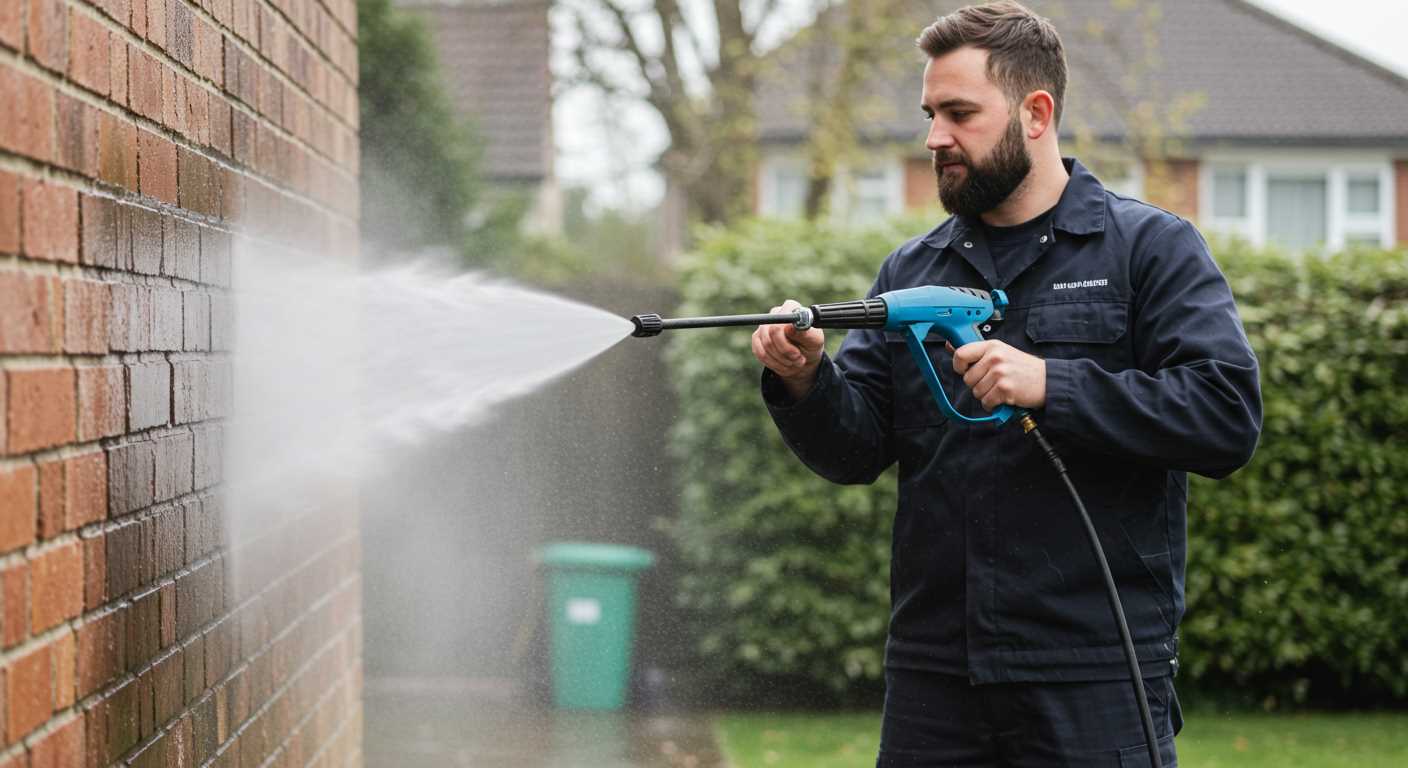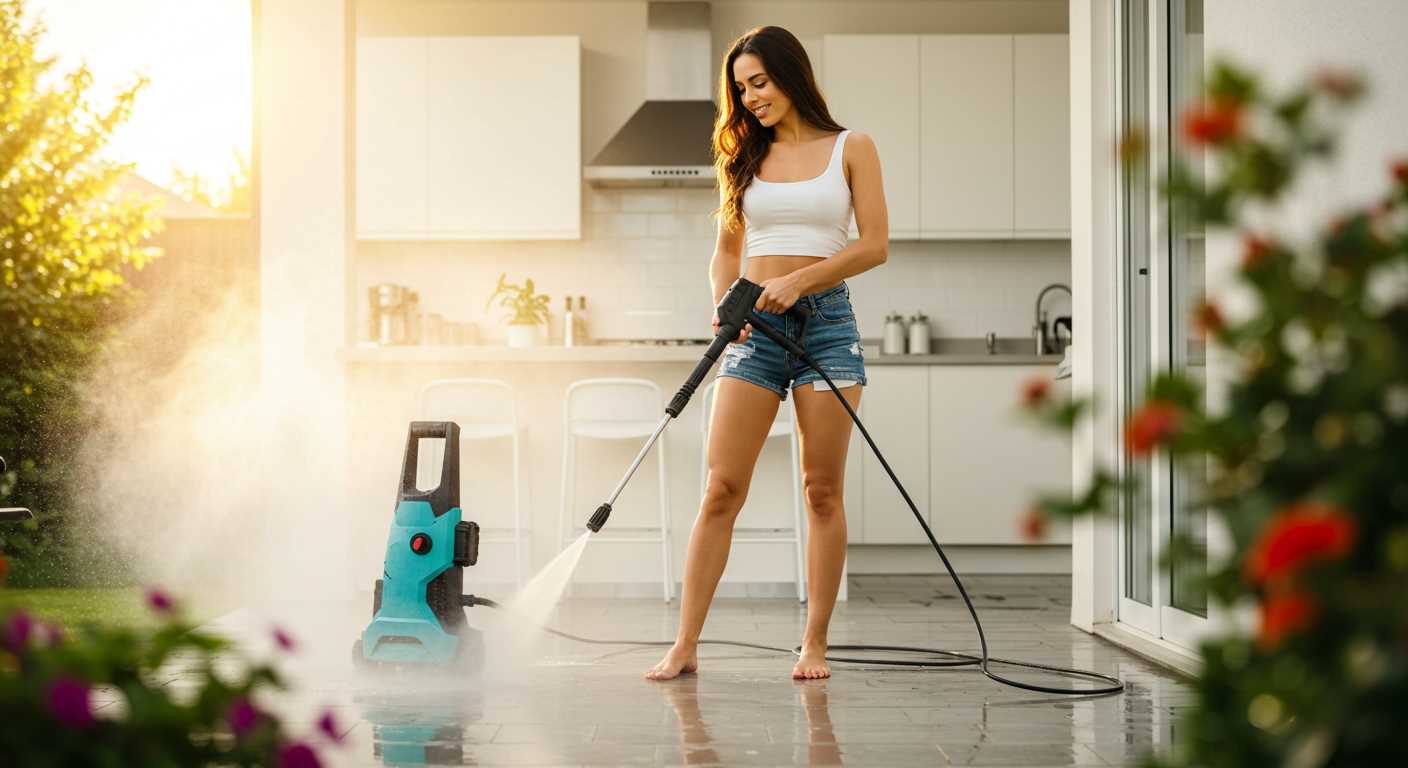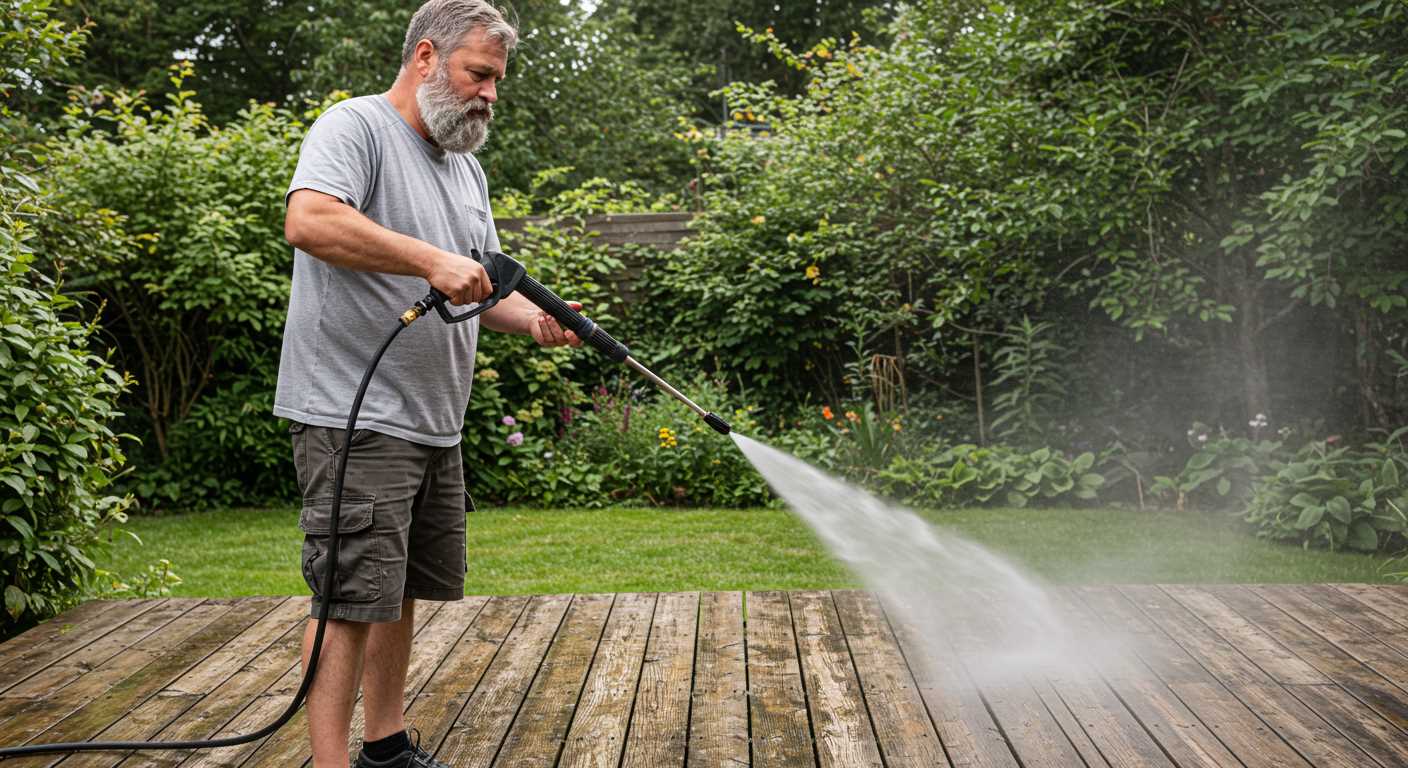

For optimal performance in demanding cleaning tasks, a pressure level exceeding 3000 PSI is recommended. Equipment designed for rigorous commercial usage often operates within a range of 3000 to 4000 PSI, providing sufficient force to tackle stubborn grime and heavy deposits effectively.
Consider models featuring adjustable nozzles to fine-tune the intensity for various applications. This versatility allows for the safe cleaning of delicate surfaces alongside those requiring brute strength. An industrial cleaner with a minimum flow rate of 3 to 4 GPM complements high pressure, ensuring thorough rinsing and efficient cleansing.
Moreover, ensure the unit has a robust motor and pump system. Models with hardened components resist wear, thus extending service life. Prioritising heavy-duty construction in your selection will lead to more reliable performance, particularly in high-frequency usage scenarios. Trust in equipment that matches durability with optimal pressure ratings to meet rigorous demands.
Understanding Ratings in High-Pressure Cleaning Equipment
For professionals, a rating typically beginning at 3000 is a clear indicator of powerful cleaning capabilities. This threshold signifies that equipment can handle more demanding tasks, such as removing stubborn grease or heavy grime from industrial surfaces.
Performance Factors
Several attributes influence the overall performance of these machines. Key elements include flow rate, measured in litres per minute (L/min), and the type of nozzle used. As pressure increases, selecting the right nozzle becomes essential to harness the machine’s power efficiently without causing damage to the surfaces being cleaned.
| Application | Recommended Rating |
|---|---|
| Light Cleaning (patio, garden furniture) | 1500 – 2000 |
| Medium Cleaning (vehicles, driveways) | 2000 – 3000 |
| Heavy Cleaning (industrial, graffiti removal) | 3000+ |
Maintenance and Longevity

High-performance models require regular maintenance to ensure longevity. Regular checks on the pump, hose, and connections are crucial. Pay particular attention to any wear or tear that could impede the equipment’s effectiveness. Additionally, using filtered water can prevent clogs that affect performance over time.
Differences Between Residential and Industrial Cleaners
Residential and commercial devices differ significantly in performance and application. Residential units typically operate within a range of 1300 to 3000 units, making them suitable for light to moderate cleaning tasks. In contrast, commercial cleaners generally boast ratings from 3000 to 5000 units, designed for heavy-duty jobs like facade cleaning, vehicle fleet maintenance, and concrete restoration.
Build quality further distinguishes these categories. Home models often utilise plastic components to reduce weight and cost, while commercial machines feature robust metal housings and parts, enhancing durability under continuous use. The latter are engineered for prolonged operation, resisting wear and tear over time.
Mobility and portability are also key aspects. Residential models might offer lightweight designs for easy manoeuvring, perfect for occasional users. Conversely, commercial options often come with larger wheels or even trailer mounts, facilitating transport across job sites while ensuring stability during operation.
Another major difference lies in the versatility of accessories. Consumer devices typically include basic nozzles and brushes, catering to common cleaning tasks. On the other hand, professional units support a variety of attachments and specialised nozzles, enabling users to customise cleaning strategies for specific surfaces or contaminants.
Lastly, maintenance requirements vary. Residential equipment is often designed for minimal upkeep, appealing to casual users. However, commercial models mandate stricter maintenance schedules to ensure optimal performance and longevity, accommodating the rigorous demands of frequent and extensive use.
Key Applications for Industrial Pressure Washers
Utilising robust cleaning devices is fundamental in various sectors. Here are the primary applications I recommend:
1. Heavy Equipment Cleaning
- Excavators, bulldozers, and cranes benefit from high-intensity streams to remove grime and mud.
- Pre-maintenance cleaning helps in identifying issues like leaks or wear.
- Regular cleaning extends machinery lifespan significantly.
2. Fleet Maintenance
- Transport companies use powerful equipment to maintain trucks and buses, ensuring they remain in top condition.
- Removes road salt, oil, and diesel residue, improving safety and performance.
- Brightens the vehicle appearance, crucial for company image.
3. Food Processing Facilities
- Hygiene is paramount; thorough cleaning ensures compliance with health standards.
- High-pressure methods eradicate bacteria and contaminants from surfaces.
- Effective sanitation ultimately safeguards product quality.
4. Manufacturing Plants

- Regular cleaning of factory floors and equipment eliminates contaminants, enhancing productivity.
- Utilises heated water for stubborn grease, ensuring efficient cleaning.
- Prevents accidents by maintaining clear and clean workspaces.
5. Concrete and Pavement Cleaning

- Addresses issues with stains, mould, and mildew on walkways and driveways.
- Restores the original appearance of surfaces through high-powered jets.
- Facilities benefit from improved aesthetics and safety through regular maintenance.
In my experience, choosing the right machinery tailored to specific tasks enhances operational efficiency and safety across all these sectors.
How to Choose the Right psi for Your Cleaning Needs
For effective cleaning, select a model with a suitable pressure rating based on the task at hand. For general household use, aim for machine ratings between 1200 and 2000. This range provides adequate force for driveways, patios, and vehicle washing.
For tougher jobs, such as removing mildew, oil stains, or graffiti, machines rated from 2000 to 3000 deliver the necessary power. These models excel in commercial settings, where heavier grime is prevalent.
Specific Applications and Recommendations
Recreational vehicle cleaning typically requires units in the 1500 to 2500 range. However, industrial environments might necessitate machines with force ratings exceeding 3000, especially for degreasing heavy equipment or extensive surface preparation.
For soft materials like wood or delicate surfaces, opt for lower pressure ratings, around 1200 to 1500, to prevent damage. Always assess the surface before choosing the appropriate tool, and consider using adjustable nozzles to fine-tune the cleaning intensity.
Final Tips

Evaluate the type of detergent or cleaning solution being used, as some require specific pressure levels for optimal effectiveness. Always refer to the manufacturer’s guidelines to ensure compatibility with the unit.
Investing time in matching the required pressure with the task will enhance cleaning results and extend equipment lifespan. Prioritise your cleaning needs and select accordingly to achieve the best possible outcome.
Maintaining Optimal Performance at High Levels
For maximum effectiveness with high-output cleaning machines, regular maintenance is key. Here are the top practices I recommend:
- Routine Inspection: Conduct checks on hoses, connections, and nozzles for wear and tear. Replace any damaged parts immediately to ensure consistent performance.
- Fluid Management: Use the recommended types of cleaning solutions and water. Avoid mixing chemicals unless specified, as this can impact machine functionality.
- Regular Descaling: Mineral build-up from water can affect performance. Use descaling agents periodically to keep internal components clear.
- Check Filters: Clean or replace filters regularly to avoid blockages that can strain the system.
- Monitor Pressure Settings: Ensure settings are optimal for specific tasks. Operating above required levels can lead to excessive wear, while operating below may not effectively clean surfaces.
Additionally, consider seasonal adjustments. Cold weather can change water conditions, so protect your equipment from freezing and check for any changes in viscosity of the cleaning agents used.
Also, invest in protective measures for storage, including covers and climate-controlled spaces if necessary, to extend the life of your machine. Lastly, seeking professional service annually can uncover hidden issues and keep your equipment running smoothly.
Safety Considerations When Using High-Pressure Cleaners
Always wear appropriate personal protective equipment (PPE), including goggles, gloves, and sturdy footwear, to shield yourself from flying debris and overspray. Ensure that bystanders are kept at a safe distance while operating the equipment, as the force of the stream can cause injury or damage.
Before starting, inspect hoses and nozzles for wear or damage. Leaks can lead to unexpected pressure release, resulting in hazardous situations. Familiarise yourself with the machine’s controls and ensure it is stable, particularly on uneven surfaces.
Maintain a safe working distance from surfaces being cleaned. High-velocity jets can strip paint, damage wood, or even injure bystanders if not handled correctly. A minimum distance of 30 cm from the surface is generally safe, but this can vary based on the nozzle type and its application.
Be cautious with electrical components. Ensure that the equipment is connected to a grounded outlet, and avoid using it in wet conditions to prevent electrocution. Always turn off the machine and disconnect it from the power source before changing nozzles or making repairs.
Check the manufacturer’s guidelines regarding suitable cleaning materials. Some chemicals may react negatively with high-pressure equipment or surfaces, leading to dangerous situations. Only use detergents that are explicitly recommended for your unit.
Lastly, ensure you are aware of your surroundings. Look out for overhead power lines, nearby pedestrians, and any obstacles that may pose risks while operating. If in doubt about the appropriate technique or application, consult the manual or seek advice from a professional. Safety should always be the priority.
FAQ:
What is the minimum psi needed for a pressure washer to be classified as industrial?
Pressure washers that are deemed industrial typically have a minimum psi (pounds per square inch) rating of around 2,500 psi. This level of pressure is necessary to handle heavy-duty cleaning tasks often seen in industrial settings, such as removing grease, grime, and other tough substances from large equipment and surfaces. Industrial pressure washers can go up to 4,000 psi or more, providing the power needed for more demanding applications.
How does the psi of a pressure washer affect its cleaning ability?
The psi of a pressure washer directly influences its cleaning power. Higher psi ratings indicate greater pressure, which allows the washer to remove stubborn dirt and stains more effectively. For instance, a pressure washer with 2,000 psi can handle basic residential tasks like cleaning patios and vehicles, while one with 3,000 psi is better suited for industrial cleaning jobs that require the removal of heavy debris or substances like oil and grease. However, it’s important to note that while higher psi can improve cleaning efficiency, using too much pressure on delicate surfaces can cause damage.
Are there other factors besides psi that determine whether a pressure washer is industrial?
Yes, while psi is an important factor, several other characteristics contribute to classifying a pressure washer as industrial. These include the flow rate, measured in gallons per minute (GPM), which indicates how much water the unit can deliver. A higher GPM, alongside the psi, enhances cleaning effectiveness. Furthermore, industrial pressure washers often feature robust components designed for heavy use, such as durable motors, heavy-duty hoses, and specialized nozzles for various tasks. Portability features, such as wheels and handles, also play a role in their usability in industrial settings.







